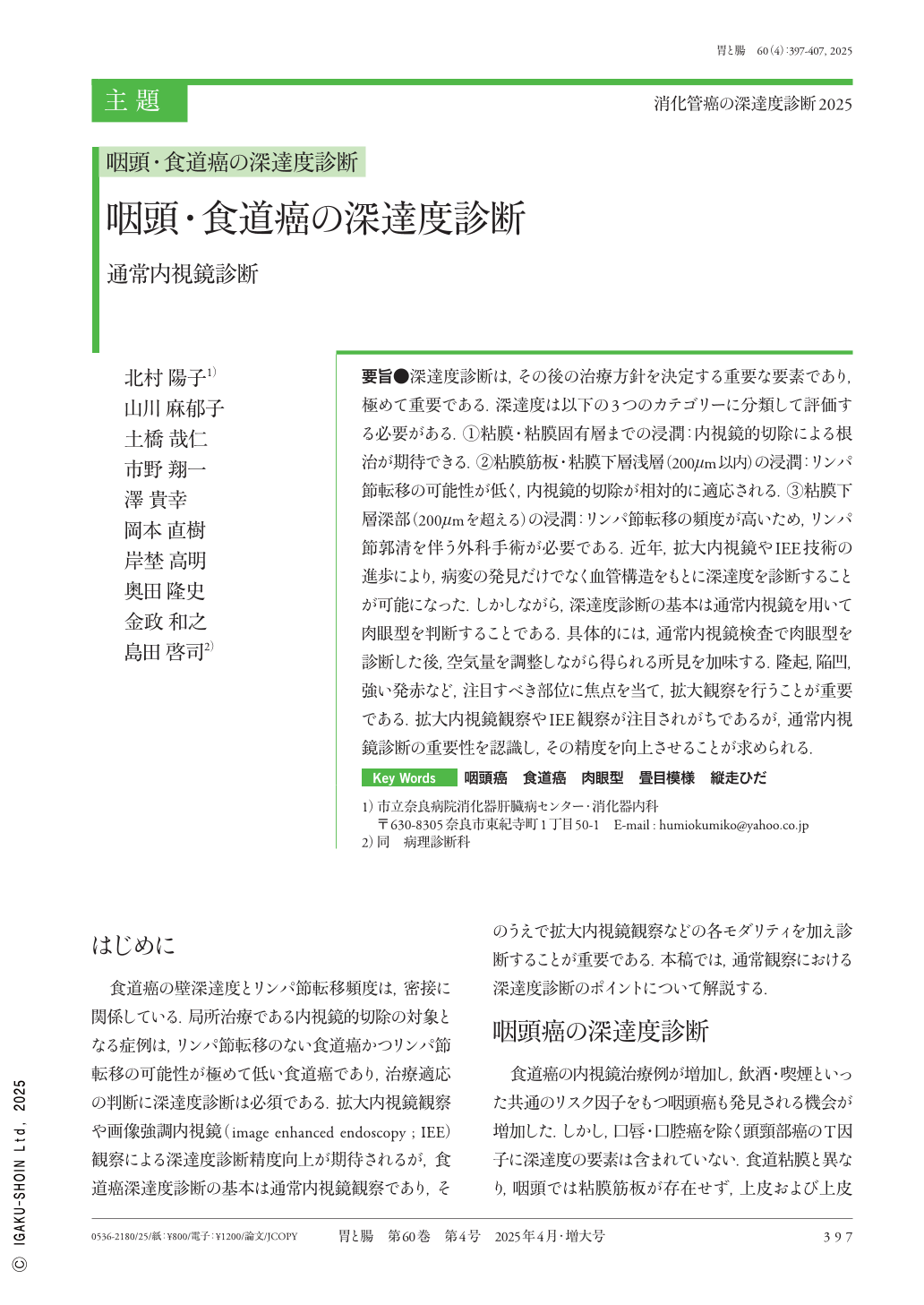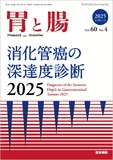Japanese
English
- 有料閲覧
- Abstract 文献概要
- 1ページ目 Look Inside
- 参考文献 Reference
- サイト内被引用 Cited by
要旨●深達度診断は,その後の治療方針を決定する重要な要素であり,極めて重要である.深達度は以下の3つのカテゴリーに分類して評価する必要がある.①粘膜・粘膜固有層までの浸潤:内視鏡的切除による根治が期待できる.②粘膜筋板・粘膜下層浅層(200μm以内)の浸潤:リンパ節転移の可能性が低く,内視鏡的切除が相対的に適応される.③粘膜下層深部(200μmを超える)の浸潤:リンパ節転移の頻度が高いため,リンパ節郭清を伴う外科手術が必要である.近年,拡大内視鏡やIEE技術の進歩により,病変の発見だけでなく血管構造をもとに深達度を診断することが可能になった.しかしながら,深達度診断の基本は通常内視鏡を用いて肉眼型を判断することである.具体的には,通常内視鏡検査で肉眼型を診断した後,空気量を調整しながら得られる所見を加味する.隆起,陥凹,強い発赤など,注目すべき部位に焦点を当て,拡大観察を行うことが重要である.拡大内視鏡観察やIEE観察が注目されがちであるが,通常内視鏡診断の重要性を認識し,その精度を向上させることが求められる.
The depth of invasion diagnosis is critical in determining future treatment strategies. It must be evaluated by categorizing into the three groups listed below:
1. Mucosal or lamina propria invasion:Endoscopic resection may result in a curative outcome.
2. Invasion into the muscularis mucosae or superficial submucosa(within 200μm):Lymph node metastasis is rare, making endoscopic resection a reasonable option.
3. Deep submucosal invasion(more than 200μm):High frequency of lymph node metastasis requires surgical resection with lymph node dissection.
In recent years, advances in magnifying and image-enhanced endoscopy have allowed not only the detection of lesions but also the assessment of invasion depth based on vascular patterns. However, the basis of the depth of invasion diagnosis is formed by the assessment of macroscopic types through standard endoscopy.
In particular, after the macroscopic type has been diagnosed using conventional endoscopy, results obtained by varying the amount of air should be considered. It is critical to focus on key areas, such as elevations, depressions, or intense redness, and make magnified observations. While magnifying and image-enhanced endoscopy are frequently discussed, it is critical to recognize the value of conventional endoscopy and work to improve its diagnostic accuracy.

Copyright © 2025, Igaku-Shoin Ltd. All rights reserved.


